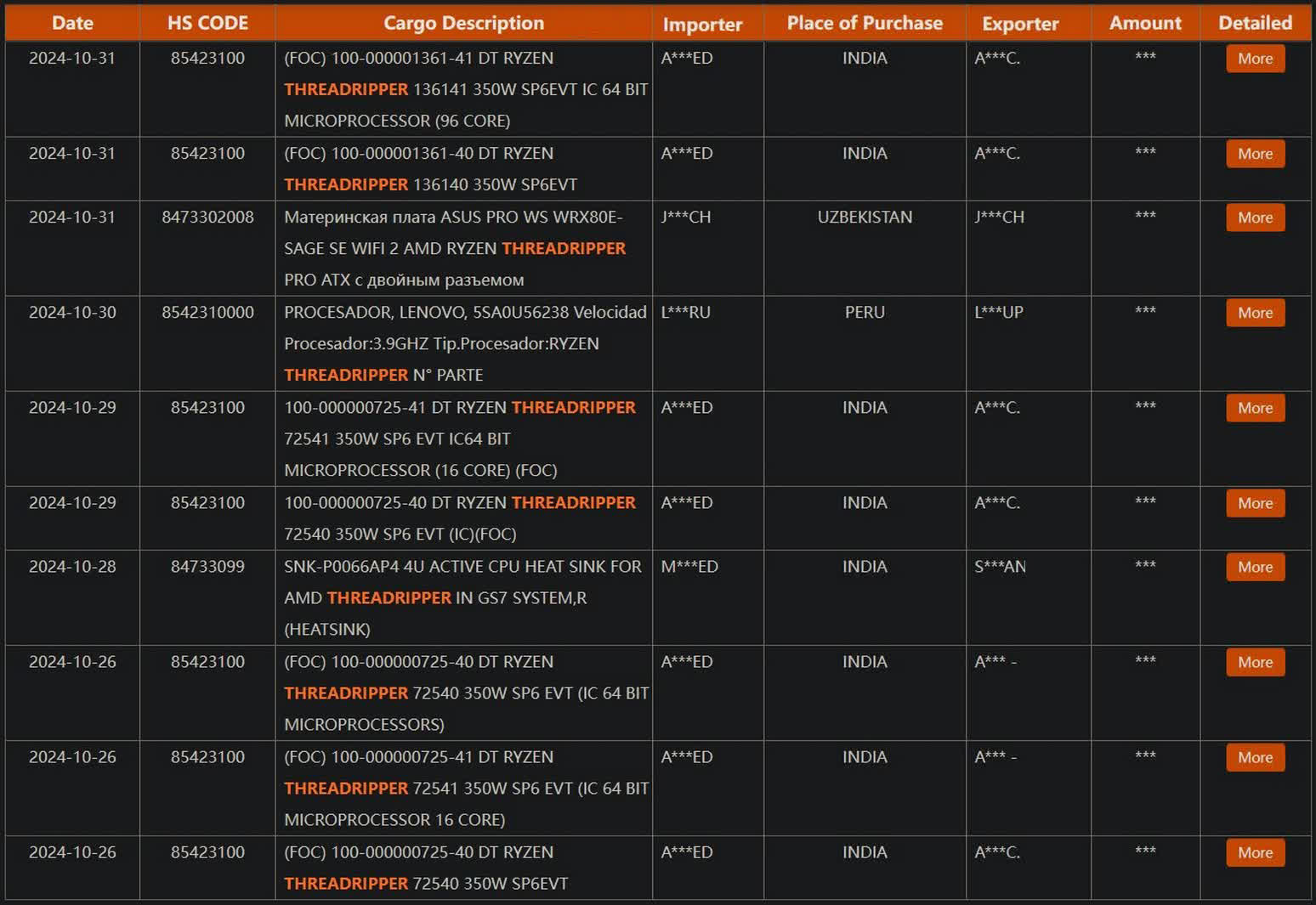Forward-looking: AMD has yet to update its Threadripper and Threadripper Pro CPUs with Zen 5 cores, but that could change soon. Zen 5-based Threadripper "Shimada Peak" CPUs have been spotted in shipping manifest data on a Chinese website, revealing some key details.
The leak comes from tipster @Olrak29_, who spotted two Threadripper 9000 CPUs listed in a shipping log on NBD.ltd. One of the CPUs is a 96-core model, likely the flagship SKU in the Shimada Peak lineup, while the other is a 16-core chip that could serve as the entry-level option for Zen 5-based Threadripper. The listing also confirms that both chips will use the SP6 socket and feature a 350W maximum TDP.
Interestingly, the entry-level SKU in the Zen 4-based Threadripper 7000 series has 24 cores, suggesting the addition of a 16-core model may be AMD's attempt to offer a more affordable option for mainstream users. Furthermore, while the top-end chip in the standard Threadripper 7000 lineup maxes out at 64 cores, the Pro series is led by a 96-core SKU.
It remains to be seen whether the leaked 96-core chip will belong to the standard Threadripper 9000 family or the Pro lineup.
The latest leak didn't reveal much additional information about the upcoming CPUs, but an earlier report shed some light on the flagship SKU. According to that leak, the chip is based on the Zen 5 architecture, featuring 96 cores and 192 threads. It comprises 12 CCDs, each with eight cores and 32 MB of L3 cache, a configuration strikingly similar to the Threadripper PRO 7995WX, which also boasts 96 cores, 192 threads, and 384 MB of total L3 cache.
Details about clock speeds remain unknown for now, but online speculation suggests the upcoming processors could support up to 128 PCIe lanes. Whether AMD will match the max frequencies of the Ryzen 9000 "Granite Ridge" series or push them slightly higher for improved performance remains unknown.
The Threadripper 9000 family is expected to target the HEDT market, delivering optimized performance for specialized workloads such as 3D rendering, video editing, and scientific simulations. While a release is anticipated next year, AMD has not yet announced an exact launch timeframe.

